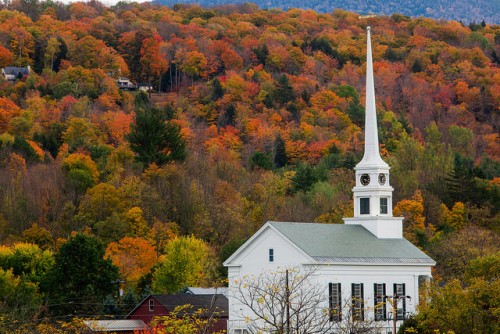Blog June 25, 2019
Are Americans Who Attend Neighborhood Churches Better Off?

Over the last decade, many of Washington DC’s fastest growing neighborhoods are experiencing a loss of religious spaces. A recent report from Sacred Spaces Conservancy, finds that citywide, roughly one-quarter of the buildings housing religious congregations have been torn down or converted into housing. In Capitol Hill, 40 percent of buildings owned by religious congregations have shuttered.
Rising rents and property taxes are also playing a role. However, many congregants remain in communities after their local congregation has departed raising the question: how might the departure of churches affect the religious lives and communities of those left behind?
One of the most obvious and immediate effects of churches leaving a neighborhood is to make it more difficult for many congregants to get to services regularly. However, among Americans who attend religious services, proximity to a congregation is not strongly associated with regular participation. Americans who live 30 to 60 minutes away from their religious congregation do not attend any less often than those who live within walking distance. Approximately one-third (34 percent) of Americans living within walking distance attend at least once a week compared to 35 percent of those who live much farther away.
Americans attending neighborhood churches are not any more likely to be than those who have to trek across town. Americans who live walking distance to their congregation are no more likely to be a member of their congregation than those living 30 to 60 minutes away (53 percent, respectively). There are a number of different factors that go into making the decision to join a particular congregation, but location appears to be fairly low on that list.
Americans living closer to their congregation are also not more likely to say they get a sense of community for their place of worship. Forty-one percent of Americans who live within walking distance to their church say their congregation gives them a strong sense of community while a similar number (37 percent) of those living 30 to 60 minutes away say the same.
A recent AEI report, titled “The Importance of Place,” found that living in close proximity to various types of public and commercial spaces, such as restaurants, parks, libraries and coffee shops, provides a range of social benefits, including increased social trust, feelings of safety, and reduced feelings of social isolation. However, simply living near your church does not appear to provide the same value. Compared to those living farther away from their congregation, Americans who attend neighborhood churches are not any more likely to rate their community highly, to feel connected to others or to believe people are generally trustworthy. What does seem to make a difference is the frequency of worship attendance. Americans who attend religious services more often express greater interpersonal trust, less social isolation and feel more favorably disposed towards their communities and the people in them.
Most Americans believe houses of worship have a lot to offer to the broader neighborhood. Seven in ten Americans say churches contribute a lot (23 percent) or some (47 percent) to make the community successful. But people attending neighborhood churches are not much more likely to personally benefit from living nearby. Beyond cutting down commute times and saving on gas there is no obvious benefit to attending religious services close to home.








